
Eamon de Valera's New York birth certificate. DOB Oct 14 1882, NY, New York.
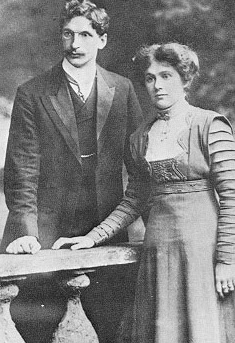
1910 Marriage photo- Eamon and wife Sinéad Bean de Valera .

1916 Eamon's original soldier photograph.
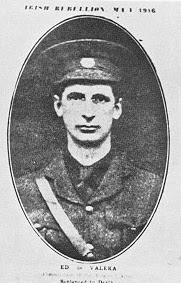
An altered copy of the above photo.
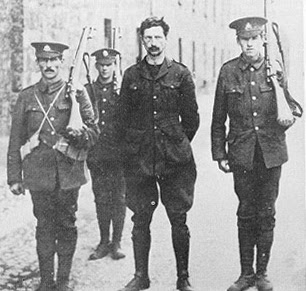
1916 Eamon captured by the British after the Easter Uprising in Ireland.

Seven months after escaping British prison where he was held for his involvment in the 1916 Easter Uprising, Eamon de Valera makes US headlines for visiting Seattle November 11, 1919.

January 1 1920, artist Sean O'Sullivan contemplates his portrait of Eamon.
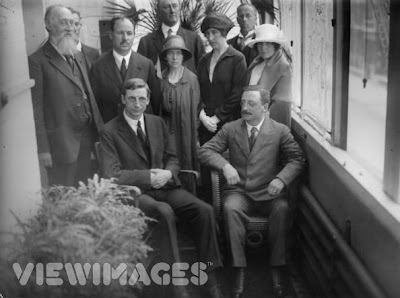
July 1921, Eamon in London with the Irish political party Sinn Fein founder Arthur Griffith during the negotiations of the treaty which partitioned Ireland.
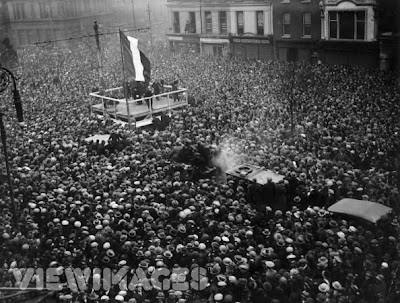
February 1922, Eamon addresses a crowd at O'Connell Street in Dublin, Ireland.

1922 picture portrait of Eamon de Valera.
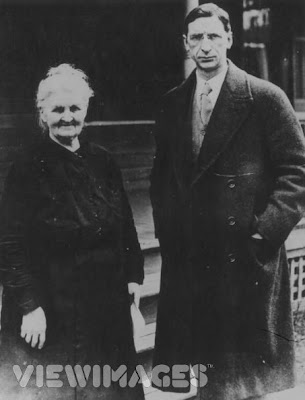 April 1927, Eamon de Valera with his mother, Catherine Coll.
April 1927, Eamon de Valera with his mother, Catherine Coll.

Eamon circa 1937 in his office at the government offices.

13 Nov 1938, Eamon (top left) attending his first football (soccer) match in official capacity at the international game between Ireland and Poland in Dailymount Park, Dublin.
 January 1941 inspecting troops on O'Connell Street, Dublin on the 25 anniverssary of the 1916 Easter Uprising.
January 1941 inspecting troops on O'Connell Street, Dublin on the 25 anniverssary of the 1916 Easter Uprising.

January 1948, Eamon attending the funeral of Yeats.

21st February 1948 a scene during the general elections in Eire. The poster displays Eamon de Valera's head and reads
The Head of a MAN whose splendid life-story makes your being able to vote for him, a proud privilege.
Eamon circa 1950.

Circa 1960 at a state function in Dublin, Ireland with his wife Sinead.
 1950 state function attended with wife Sinead.
1950 state function attended with wife Sinead.

1950- Eamon and Sinead de Valera with Dr. Douglas Hyde.

1963 Eamon meets US President John F. Kennedy.
.jpg)
1964- Eamon with U.S. President Lyndon Johnson.
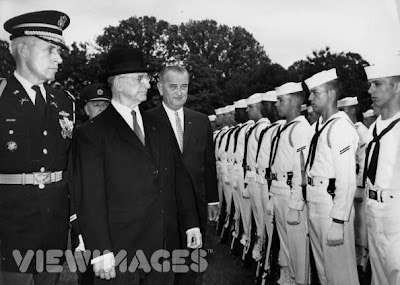
Inspecting the Guard of Honor on the White House lawn with President Lyndon Johnson.
 14 October 1882 - 29 August 1975
14 October 1882 - 29 August 1975

Eamon De Valera with Pope John XXIII.

Eamon de Valera passed away 29 August 1975, a few months after his wife Sinead.

A closer look at the tombstone of the grave in which Eamon, Sinead and their son are buried.
 Bunratty Castle was opened to the public in 1960 as a National Monument, and is open to visitors year round. It is the most complete and authentically restored and furnished castle in Ireland. Bunratty Folk Park recreates rural and urban life in 19th century Victorian Ireland.
Bunratty Castle was opened to the public in 1960 as a National Monument, and is open to visitors year round. It is the most complete and authentically restored and furnished castle in Ireland. Bunratty Folk Park recreates rural and urban life in 19th century Victorian Ireland.  There is an extensive array of indigenous buildings on its grounds which represent the social strata of Medieval life from the poorest one-room cottage to Bunratty House. The name Bunratty, Bun Raite in Irish, means the 'bottom' or 'end' of the Ratty river. This river, alongside the castle, flows into the nearby Shannon estuary.
There is an extensive array of indigenous buildings on its grounds which represent the social strata of Medieval life from the poorest one-room cottage to Bunratty House. The name Bunratty, Bun Raite in Irish, means the 'bottom' or 'end' of the Ratty river. This river, alongside the castle, flows into the nearby Shannon estuary. 











.jpg)































.jpg)





